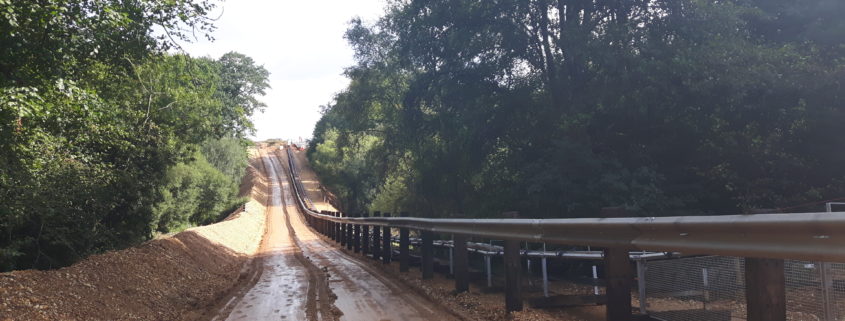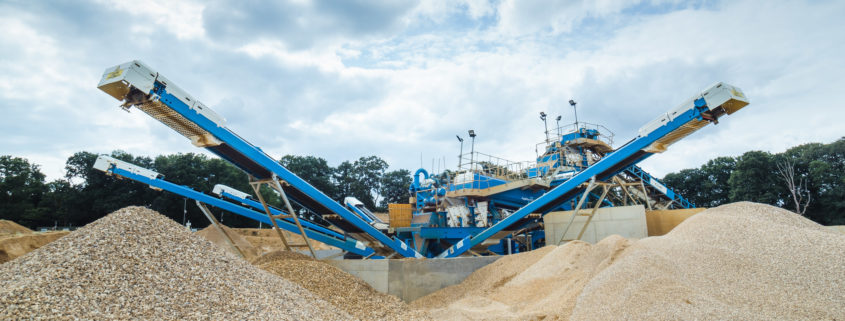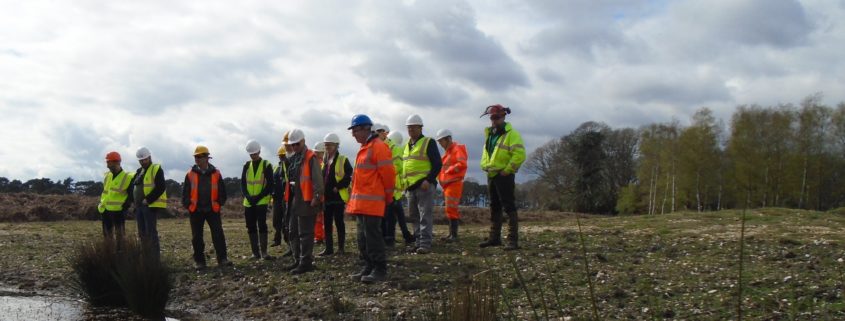Conveyors installed at Roke Manor Quarry
Brand new 800m long conveyor belts have been installed at Roke Manor Quarry to transport the aggregate from the excavation area to the processing plant.
Extracted material at the quarry will now be transported to the processing plant by new overland conveyors to reduce impacts from the heavy plant movements.
The conveyor was installed over a three week period by Atherton Materials Handling Ltd and starts from the current extraction area in phase two and continues through the site. It travels along the new haul road and under a public footpath to feed straight into the plant hopper, where the plant will continue to process the gravel to produce a range of high-quality aggregate sizes and sand.
The conveyor can take 80-100 tonnes per hour of aggregate and it is significantly quieter and more cost effective than the previous mobile plant movements. The end of the conveyor which feeds into the hopper can be easily modified and diverted to stockpile within the yard when necessary.
The conveyor also crosses the Test Way footpath, which is regularly used by members of the public and local residents. In order to keep the footpath open, the site team have installed a bridge which goes over the conveyor so that the footpath could still be used, and a bridle crossing for safe vehicular access through the site.



